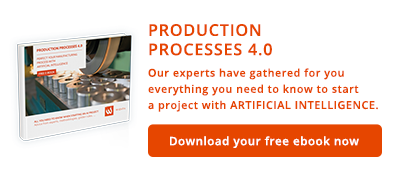In the competitive manufacturing landscape, a spreadsheet won’t work anymore. In a couple of years, the progression of computing and the dawn of artificial intelligence (AI) enabled agile companies to move from descriptive analytics (“what happened?”) to diagnostic analytics (“what caused the problem?”) and to predictive analytics (“what is likely to happen?”). Prescriptive analytics (“what should be done to achieve our objective?”) is the ultimate step in the roadmap. Here’s why the final frontier of analytic capabilities will play a crucial role on the road to Industry 4.0, binding analytics and process control.
An AI guides you to the best outcome
Predictive analytics was already a tour-de-force. Seeing into the future with AI predictions let engineers code, albeit by hand, process rules into production management tools. Unfortunately, this doesn’t help to know what to do when actions and operations can lead to an infinite number of consequences. Advanced AI goes the extra mile with prescriptive analytics: from the multitude of possible outcomes that are simulated, the best course of actions is identified to achieve the objective you defined.
Being able to learn, think and adapt on its own, the AI can explore new lines of thought to propose unseen solutions that are out of reach of the human mind. Using machine learning, AI determines by itself the rules that best suit the data to reach the predefined objective. AI-enhanced human operators can then choose to manually execute or discard the actionable insights, or decide to automate the dull, expensive, unsafe or time-sensitive tasks.
A fusion of analytics and process control
This is just the visible part of the iceberg. Previously, data analytics and process control systems were disjointed. Data was translated into insights for the management team, but this information didn’t flow back smoothly onto the production line. With prescriptive analytics, the best action, determined by AI, can be directly routed to the process control systems and its operators, closing the feedback loop and enabling performance improvements on a scale never seen before. In this way a truly intelligent and holistic system can emerge. Prescriptive analytics, in short, brings a key piece of the industry 4.0 puzzle onto the factory floor.
Wizata helps you to develop a clear vision of the ultimate optimization
Ready to link data insights and actions? Our experts can guide you in an exploratory workshop and help you develop a sharp vision of your most optimized future.
- How is AI accelerating innovation in the manufacturing industry and why should you get ready? Discover how you can innovate without risks.
- Want to manage your own AI project? Avoid common pitfalls and get fast, impressive, and inexpensive results with our experts' advice.



